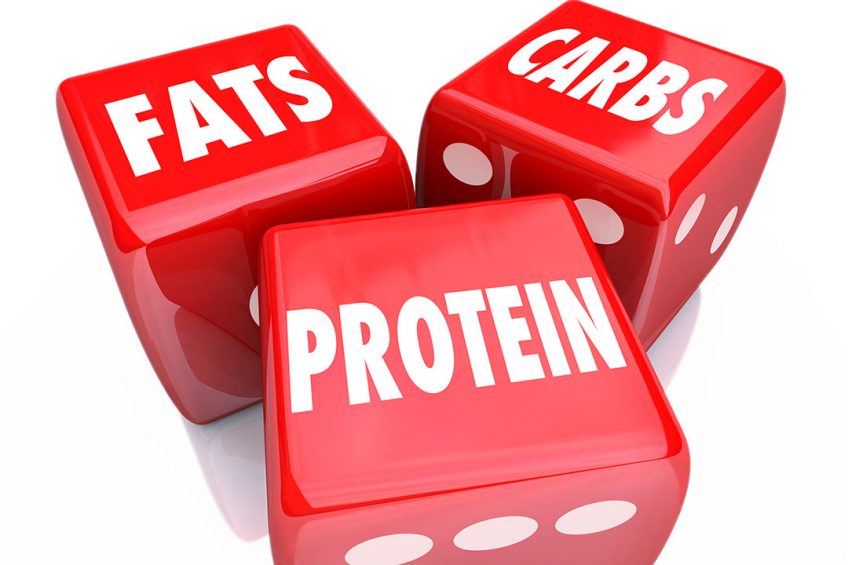Formulating piglet diets without adding antibiotics

As it becomes increasingly uncommon to mix antibiotics or zinc oxide through diets for just-weaned piglets, the question is what to provide instead to ensure an uncompromised growth pattern. Let’s take a look at the common ingredients fibre, protein and fat – what can be done?
The European swine sector is facing big challenges due to the growing pressure to reduce and regulate the use of antimicrobials and the search for alternatives. Antibiotics and zinc oxide (ZnO) in feed have been the most commonly used tools to fight weaning-related problems in post-weaning pigs.
The current pressure to reduce veterinary medication as well as zinc oxide is so strong, that it’s not just a matter of having a strategy to substitute an antibiotic for something else. On the contrary, it is necessary to take a holistic approach in which not only the diet’s characteristics and composition are being taken into account, but also animal management, genetics and welfare.
This paper aims to describe the importance of fibre, protein and fat in diets to improve gut health around weaning with potential alternatives to replace the use of antibiotics and zinc oxide.
Fibre
Inclusion of fibre in post-weaning diets is considered controversial as fibre may reduce feed intake and nutrient digestibility, thus growing the risk for the spread of pathogenic bacteria in the gastro-intestinal tract (GIT). Those controversial outcomes are partly the cause of the lack of information about functional effects of fibre, like e.g. the modification of physical-chemical characteristics of gut content or changes in the fermentation pattern.
For that reason, it is necessary to evaluate fibre from a functional point of view instead of from an analytical point of view. From a functional point of view, it is possible to classify fibre in:
- Inert fibre – carbohydrates which are not digested and which are not fermentable; and
- Fermentable fibre – carbohydrates which are not digested but which are fermented in the GIT.
The major ingredients generally used as source of inert fibre in piglets are derived from wheat, oat hulls and sunflower hulls. The sources for fermentable fibre are sugar beet pulp, soy hulls and inulin.
Also read: Improving the use of fibre in pig feed
The inclusion of inert fibre sources in post-weaning diets will reduce the retention time for the intestinal contents and will modify the intestinal ecosystem, which will reduce the spread of pathogenic bacteria in the large intestine. Research conducted at Schothorst Feed Research by Rosemarijn Gerritsen and others in 2012 showed that adding 12.8% of inert fibre (50g of wheat straw and 100g of oat hulls per kg) to a cereal-based diets for the first 14 days post-weaning led to an increase in feed consumption when compared to a cereal-based diet or a positive control diet which was rich in milk-derived sub-products and crystalline amino acids, see also Table 1.
In the same experiment, the inert fibre diet was associated with a greater stomach weight and amylase activity in the intestinal brush border enzymes next to lower counts of E. coli in the ileum and colon digesta. The physiological effects of the inclusion of inert fibre sources in post-weaning diets appear to be related to a higher feed consumption and to a better development of the GIT. The inclusion of inert fibre dilutes the nutrient contents in the diet, which results in an intake stimulation. On top of that, inert fibre reduces the E. coli counts in the small and large intestines, due to a direct physical effect of those ingredients, which block E. coli adhesion to the piglets’ intestinal receptors.
Fermentation of fermentable fibre in the diet by the GIT microbiota stimulates the generation of short-chain fatty acids (SCFA). The inclusion of fermentable fibre in weaner diets increases water retention in the digesta and provides a substrate which will be fermented in the distal part of the GIT. As a consequence, the composition and activity of the microbiota in the GIT will depend on the fermentation capacity of the weaner pig. In a research from 2009, Francesc Molist and others observed a strong growth in the concentration of SCFA in the caecum of weaned piglets two weeks post-weaning when fed diets containing 40 to 80g of wheat bran or 30 to 60g of beet pulp per kg feed, compared to piglets fed with a control diet low in fibre during and compared to piglets one week post-weaning. Therefore this might indicate that piglets post-weaning need time (probably around 2 weeks depending on the weaning age and weight) to be able to ferment fibre and therefore the inclusion of this type of fibre in immature animals might be related to a higher incidence of diarrhoea.
Thus, with respect to fibre, it is possible to conclude that around weaning it is recommended to include moderate levels of inert fibre in diets, to:
- Dilute the diet with moderate levels of inert fibre and avoid diarrhoea due to an accumulation of undigested nutrients; and
- Help the piglets to restore the intestinal function.

Proteins
Crude protein which is undigested in the small intestine will normally serve as a substrate for E. coli, which is negative for gut health. For that reason, diets aiming at improving weaner gut health, the reduction of the crude protein content in the diet has been used as an alternative strategy to using antibiotics. In the Netherlands, weaning diets usually have a crude protein level of 16.5-17.5% with a SID-level of lysine of between 0.8-0.9%.
On the other hand, in order to reduce the substrate available for E. coli it is also important to determine the ileal digestibility of the different crude protein sources in recently weaned pigs. Recent studies have shown that the ileal digestibility of plant-derived crude protein sources, like e.g. soya bean, rapeseed or sunflower meals, could be between 10-15% less digestible in piglets compared to grow-finishing pigs. Thus it appears reasonable to use different crude protein and amino acid digestibility coefficients in post-weaning piglets compared to grow-finisher pigs, as the latter have a higher digestion capacity.
Figure 1 – Buffer capacity of various ingredients (g/kg).

With regard to crude protein digestibility, it is important to take buffer capacity into account, especially around weaning. In Figure 1, the buffer effect of various ingredients is being shown: the crude protein sources have a larger buffer capacity than cereals. Within the crude protein sources, fish meal and skim milk due to the higher calcium content showed to have the highest buffer capacity. On the other hand, it is necessary to take into account that zinc oxide has a buffer capacity of 20,000 mEq. That indicates that the stomach pH of piglets fed with zinc oxide will have on average a stomach pH > 4, reducing the stomach’s capacity to play a role as gastric barrier against pathogens. With the aim of protecting weaners and optimising gastric digestion of crude protein, the pH of the stomach has to be kept below values like 3.5-4. Thus, the selection of crude protein sources with a low buffer capacity or the use of acidifiers to reduce the pH in the stomach is very important. In a recently conducted trial at Schothorst Feed Research, it was shown that the reduction of the buffer capacity in weaner feed by 200 mEq led to a 8% greater body weight at day 35 post-weaning.
Also read: The role of protein on gut health
Ultimately, it is important to mention that the withdrawal of antibiotics from feed could result in a growth of the animal’s amino acid maintenance requirements, due to high needs of the immunity system, caused by the growth of bacteria in the small intestine. In diets aimed at improving gut health, various functional amino acids like threonine and tryptophan play an important role. Hence, it is necessary to revise the amino acid profile of the diets of post-weaning pigs in order to increase the proportion of threonine and tryptophan in the diet, compared to lysine.
In the Netherlands, it is very common to formulate diets with the ratio SID threonine: SID lysine being > 63% and the ratio SID tryptophan: SID lysine being > 18%. In the future, the role of other functional amino acids like glutamine will become more important as soon as its use as a synthetic amino acid will be allowed in Europe.
Fat
Up until this moment, there is little information available about the effect of the distinct fat sources or the fat levels in diets to promote weaner gut health. Still, some studies suggest that the use of omega-3 fatty acids, derived from e.g. fish oil could have a beneficial effect on gut health, whereas others have not found any positive results. It is essential to remember that when animals have diarrhoea, the first nutrient that will affect their digestion is fat. The growth of pathogenic bacteria in the GIT will result in the degradation of bile acids, thus negatively affecting fat digestion.
In the situation of intestinal challenges it seems interesting to use fat sources with a high digestibility. For that reason, ingredients rich in short-chain fatty acids like coconut and palm kernel oils are promoting the weaners’ gut health. Additionally, the ratio between unsaturated fatty acids and saturated fatty acids in the diet is an important factor which influences fat digestion. For that reason, the ration has to be around 3-4 for post-weaning piglets. Levels lower than 3 have been clearly related to a lower fat digestibility, see also Figure 2.
Figure 2 – Relation between the proportion of unsaturated fatty acids vs saturated fatty acids in the diet and the relative absorption of fat in post-weaning pigs.

Conclusions
To be able to withdraw antibiotics and zinc oxide from diets for post-weaning pigs, it is crucial to understand the effect and the importance of fibre, crude protein and fat on gut health. The nutritional strategy has to be based on formulating post-weaning diets which are low in nutrients to increase the animals’ intake but to prevent that there will be an overload of non-digested substrate in the GIT available for bacteria. What is already clear is that replacing feed antibiotics or zinc oxide by just introducing feed additives without re-formulating the diets will lead to post-weaning diarrhoea. With regard to fibre, it is important to include ingredients that provide inert fibre to develop the GIT capacity and function and reduce the growth of pathogenic bacteria.
In addition, it is important to formulate diets low in crude protein, using ingredients of high digestibility and synthetic amino acids, using correct digestibility coefficients for each stage of production. On top, it is important to reduce the diet’s buffer capacity in order to optimise the stomach’s function.
With regard to fat, it is recommended to use ingredients rich in medium-chain fatty acids (MCFA) and to optimise the diet keeping in mind the ratio between unsaturated fatty acids and saturated fatty acids. Nevertheless, there will always remain a need for substantial research into the effect and the function of the fat and fatty acid sources in order to promote gut health. Also more research is needed to improve this strategy by using feed additives that will show a synergistic effect.
References available on request.











